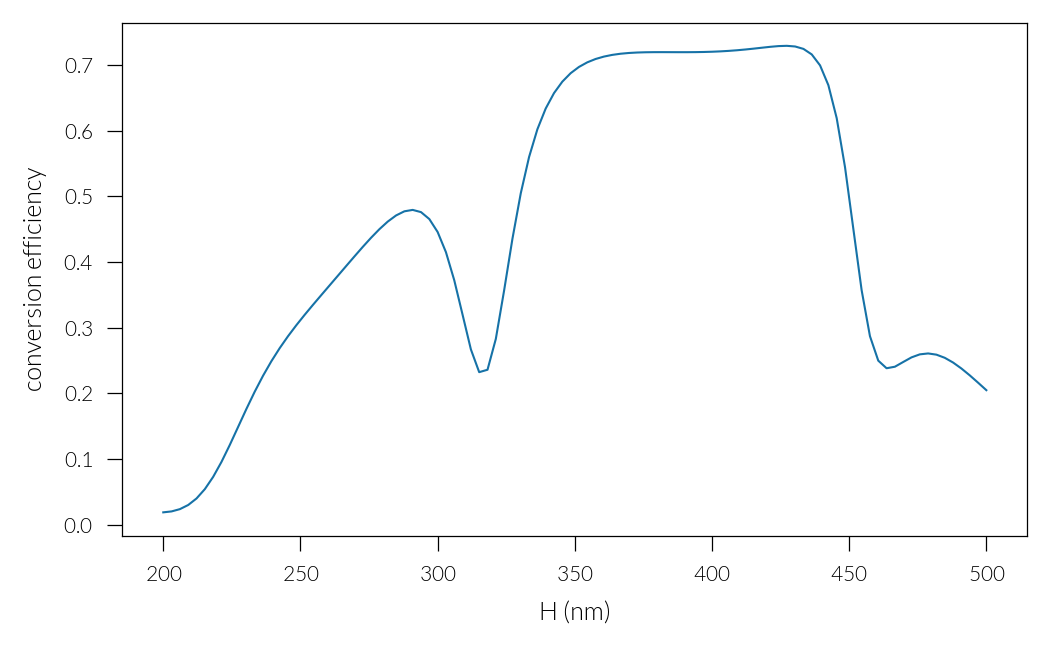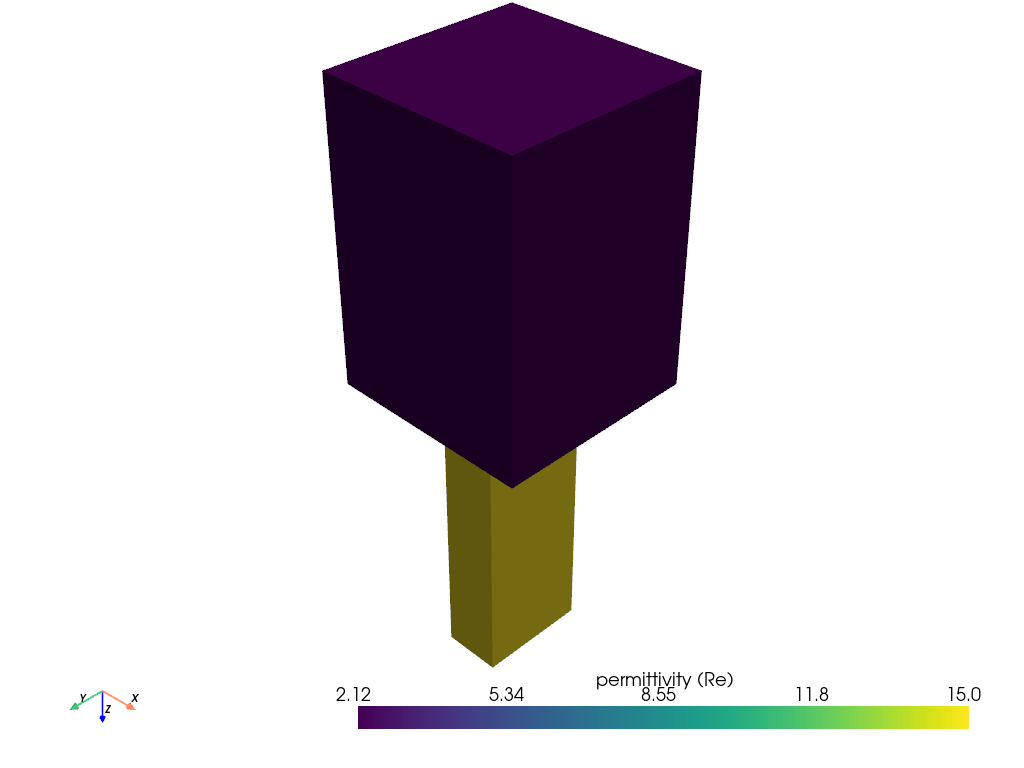Note
Go to the end to download the full example code. or to run this example in your browser via Binder
Polarization conversion#
Simulation of conversion efficiency of a geometric metasurface.
import matplotlib.pyplot as plt
import numpy as np
import nannos as nn
The unit cell is a rectangular Si structure on a SiO2 substrate as in [Yoon2021]. Circularly-polarized light of wavelength 635 nm is normally incident from the substrate to the structure
Define a function to initialize simulation
def simu(H, psi):
lattice = nn.Lattice([[P, 0], [0, P]], discretization=2**9)
sup = lattice.Layer("Superstrate", epsilon=eps_SiO2)
sub = lattice.Layer("Substrate", epsilon=1)
epsilon = lattice.ones()
metaatom = lattice.rectangle((0.5 * P, 0.5 * P), (W, L))
epsilon[metaatom] = eps_Si
ms = lattice.Layer("Metasurface", thickness=H, epsilon=epsilon)
pw = nn.PlaneWave(wavelength=wl, angles=(0, 0, psi))
return nn.Simulation([sup, ms, sub], pw, nh=nh)
Since the layer eigenmodes do not change with thickness we compute them only once for the first iteration.
nb_thick = 100
thicknesses = np.linspace(200, 500, nb_thick)
conv_effs = np.zeros(nb_thick)
for ih, H in enumerate(thicknesses):
# x-polarization
if ih == 0:
simx = simu(H, 0)
else:
simx.layers[1].thickness = H
simx.reset("S")
rxi, txi = simx.diffraction_efficiencies(orders=True, complex=True)
txx = simx.get_order(txi[0], (0, 0))
# y-polarization
if ih == 0:
simy = simu(H, 90)
else:
simy.layers[1].thickness = H
# print(self.is_solved)
simy.reset("S")
ryi, tyi = simy.diffraction_efficiencies(orders=True, complex=True)
tyy = simy.get_order(tyi[1], (0, 0))
conv_effs[ih] = np.abs((tyy - txx) / 2) ** 2
Plot the efficiency
plt.clf()
plt.plot(thicknesses, conv_effs)
plt.xlabel("H (nm)")
plt.ylabel("conversion efficiency")
plt.tight_layout()
plt.show()

Plot the unit cell
p = simx.plot_structure()
p.show_axes()
p.show()

Total running time of the script: (0 minutes 27.631 seconds)
Estimated memory usage: 757 MB

